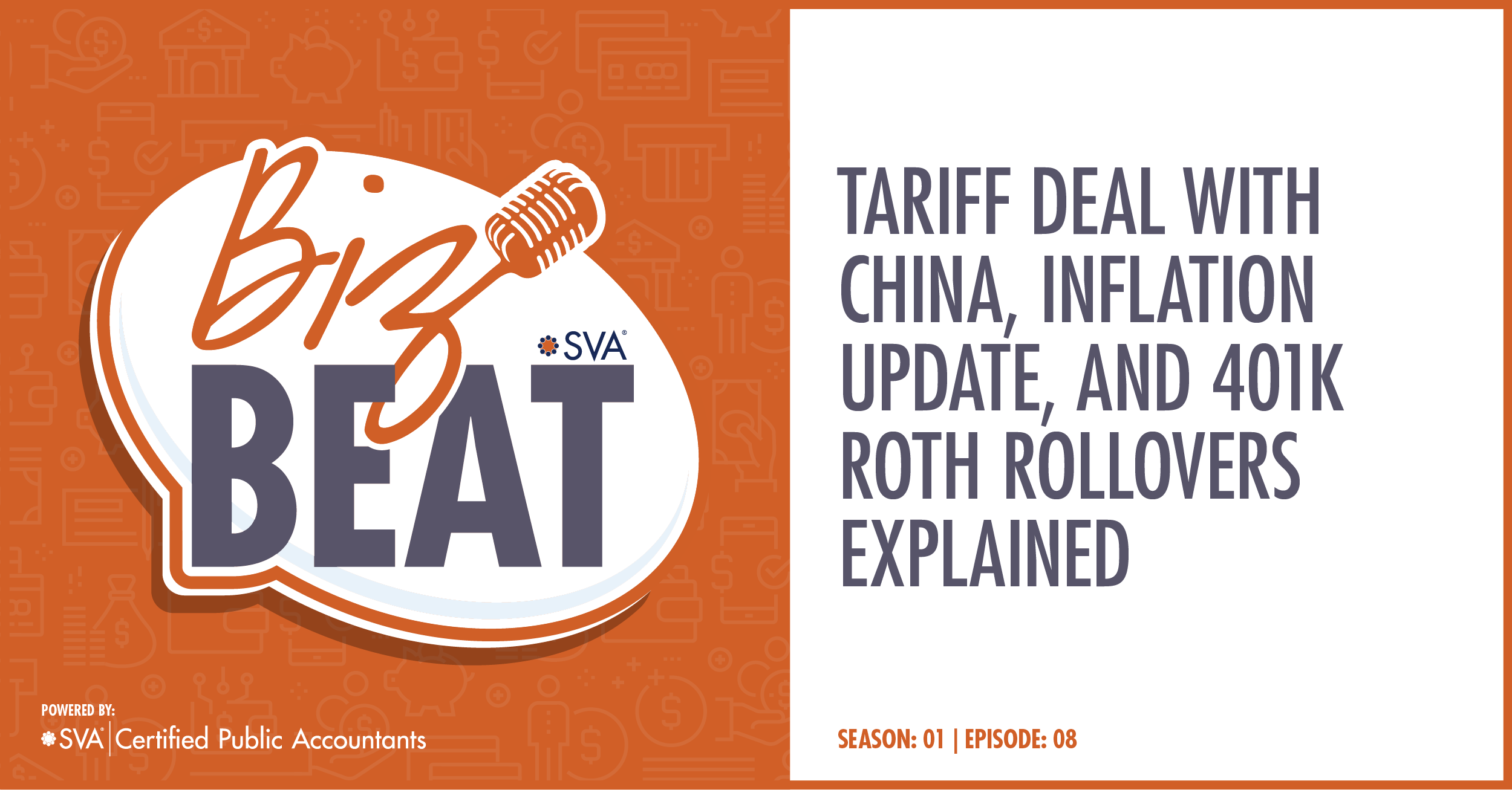Business owners are keeping a close eye on several developments that could influence planning for the second half of the year.
A potential new tariff agreement between the U.S. and China is gaining attention, inflation numbers have come in lower than expected, and debate continues in Congress over raising the debt limit and passing new tax legislation. In addition, we discuss Roth 401(k) options and when it might be worth converting pre-tax dollars.
Here’s a breakdown of what’s happening, and what it might mean for your business.
(Download Video Transcript)
New Tariff Framework with China?
Recent statements by President Trump on his Truth Social platform suggest the U.S. and China may be nearing a new trade deal. The proposed framework includes a 55% tariff on Chinese goods coming into the U.S., and a 10% tariff on U.S. goods exported to China.
While the full details are still pending, if the agreement is finalized it could bring more predictability for companies that rely on Chinese suppliers.
If the deal moves forward, it could mark a turning point for businesses that source from China by offering a clearer pricing framework. It might also provide a baseline for negotiations with other countries.
Business leaders and markets will likely watch closely for signs of stability, which could bring some much-needed predictability to supply chain costs and future planning.
Inflation: Lower Than Anticipated
Inflation data for May shows an annualized rate of 2.4%. This was a surprise to many analysts who expected higher numbers, especially given ongoing tariff dynamics and global economic shifts. The lower figure sparked optimism, especially for business owners worried about rising borrowing costs.
Why does this matter? Lower inflation puts less upward pressure on interest rates, which can benefit everything from loans to credit card payments to mortgage costs. It also suggests that recent tariff policies haven’t triggered the kind of price spikes some had feared—at least not yet.
It’s too early to say whether this is a trend, but for now, the news offers some relief for businesses managing debt or considering expansion.
The Tax Bill and Debt Ceiling: Linked and Still in Flux
Congress is discussing both a potential tax package and an increase to the federal debt ceiling. The proposed tax changes are expected to increase the federal deficit, so lawmakers are also considering a debt limit increase of $4 to $5 trillion to avoid a government funding shortfall.
While President Trump has pushed for passage by July 4, a more realistic timeline may be later this year. Ongoing Senate negotiations are holding up progress, especially as legislators try to reconcile popular tax provisions with concerns about increased spending. The final outcome may depend on who’s willing to compromise on spending cuts and deficit projections.
For business owners, this means the timing of tax planning strategies is still uncertain. Any changes passed later in the year could affect year-end decisions related to deductions, credits, and entity structures.
Roth 401(k) vs Traditional 401(k)
If you have ever wondered if you should use a Roth 401(k) after maxing out your traditional 401 (k), the answer depends on your income levels now versus what you expect them to be in retirement.
Traditional 401(k) contributions are pre-tax, reducing your taxable income today. Roth contributions, on the other hand, are made with after-tax dollars, but the earnings grow tax-free and can be withdrawn tax-free in retirement.
A lesser-known option is the in-plan rollover of pre-tax 401(k) funds into Roth 401(k) accounts. If your plan allows it, you may be able to convert some funds now. This means you’ll pay tax on the rollover amount this year but gaining future tax-free growth.
This can be particularly appealing during lower-income years or if you expect your tax bracket to rise in retirement. Not all retirement plans offer this feature, so start by checking with your HR team or plan administrator. If your current plan doesn’t allow it, companies may be open to amending the plan if there’s enough interest from employees.
Looking Ahead
From potential changes in trade policy to tax law and retirement planning strategies, these updates all point to the importance of staying flexible and informed. While some developments may take months to unfold, others—like the inflation trends or tariff shifts—can affect business decisions right away.
If you’re considering how these topics impact your company’s strategy, now is a good time to connect with a trusted advisor to review your options. Whether it’s planning for the next fiscal year, adjusting your retirement contributions, or exploring tax scenarios, the goal is to stay ahead, no matter how quickly things change.
Want more insights like these? The Biz Beat by SVA is your weekly go-to source for practical tax and business advice.
Subscribe on Apple Podcasts, Spotify, or YouTube.
Submit questions at sva.com/bizbeat
© 2025 SVA Certified Public Accountants

